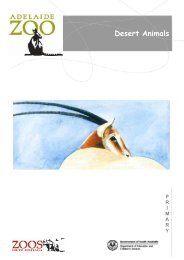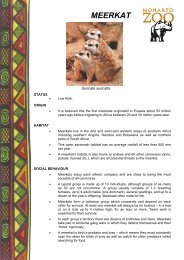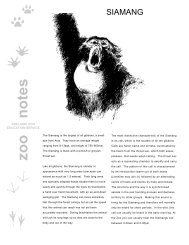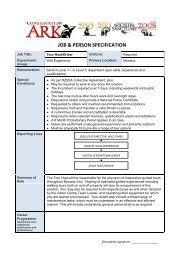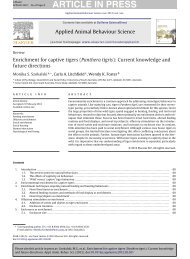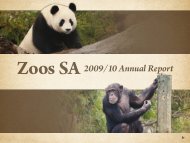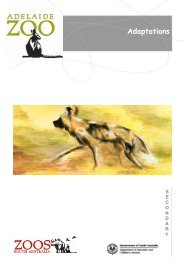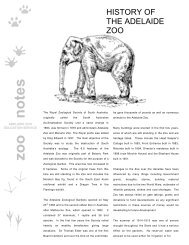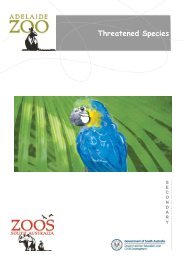2008 - 2009 Annual Report - Zoos South Australia
2008 - 2009 Annual Report - Zoos South Australia
2008 - 2009 Annual Report - Zoos South Australia
- No tags were found...
You also want an ePaper? Increase the reach of your titles
YUMPU automatically turns print PDFs into web optimized ePapers that Google loves.
CONTENTSYear In ReviewPresident and CEO’s <strong>Report</strong>Conservation ProgramsConservation ArkVeterinary Conservation ProgramsAssets and InfrastructureConservation EducationThe AnimalsLiving collectionsThreatened SpeciesOperationsCommunications and PartnershipsVisitor ExperiencesHuman ResourcesFinancial <strong>Report</strong>FinalsConservation ArkThis year saw the launch of Conservation Ark, the Society’sintegrated science and conservation arm. ConservationArk was established to encompass the increasing rangeof conservation activities that the Society is involvedwith, including direct co-ordination and management ofthreatened species programs and field support and captivebreeding for release to the wild, as well as research.To coincide with the launch of Conservation Ark, a newwebsite has also been created profiling some of ourconservation and research activities, and that can be seenat www.conservationark.com.au. There are many plans tocontinue to grow the reach of Conservation Ark’s activities,so remember to visit the website and see what new programswe are involved with.Native SpeciesNative programs continue to be a focus for Conservation Arkactivities, with several projects reaching important milestonesin the last year.The Brush-tailed rock wallaby program entered a newstage with the first reintroduction of 10 animals into theGrampians National Park in November. Many years of sitepreparation, baiting, captive breeding and planning wentinto reaching this point. The reintroduction was celebratedwith a gala evening at the Royal Mail Hotel in Dunkeld wherethe many partners and sponsors were thanked for theircontribution to the program. Increases in the wild populationwere also seen along the Snowy River where that populationnow contains more than 20 individuals.The Black-flanked rock wallaby, or Warru, program has seensome exciting developments. The captive population hasgrown with further pouch young brought back from the wildand cross-fostered into Yellow-footed rock wallaby mothers.And population growth has also come from the first joeysbeing born in captivity. Field work has discovered animalsat new sites, expanding the known range and numbers ofanimals, and information continues to be collected on habitatrequirements and genetics which provides the basis forreintroduction planning. Several Anangu rangers also visitedAdelaide and Monarto to gain experience in working withnative species, building the capacity of staff in the APY lands.Conservation and research – 3 of 8



